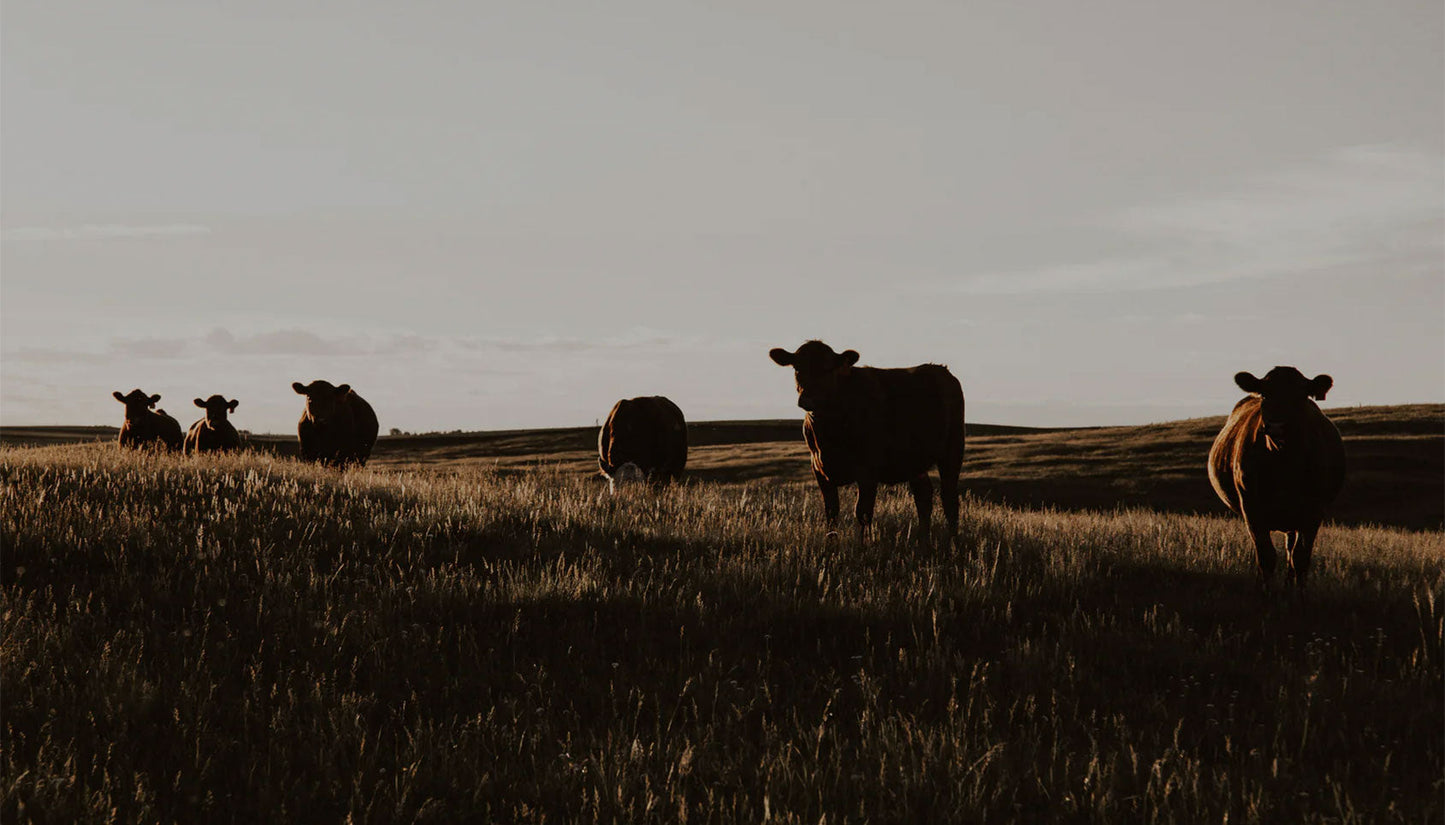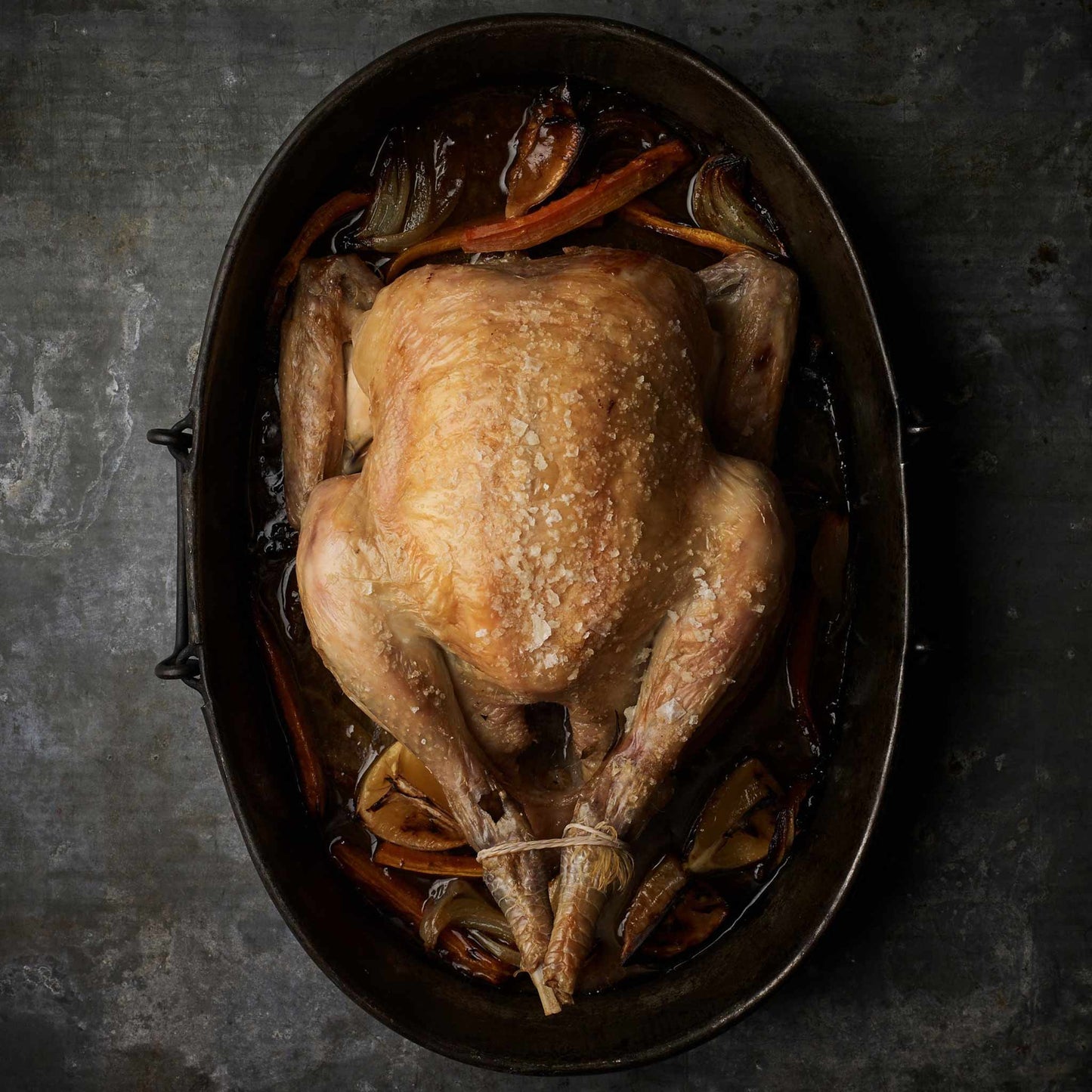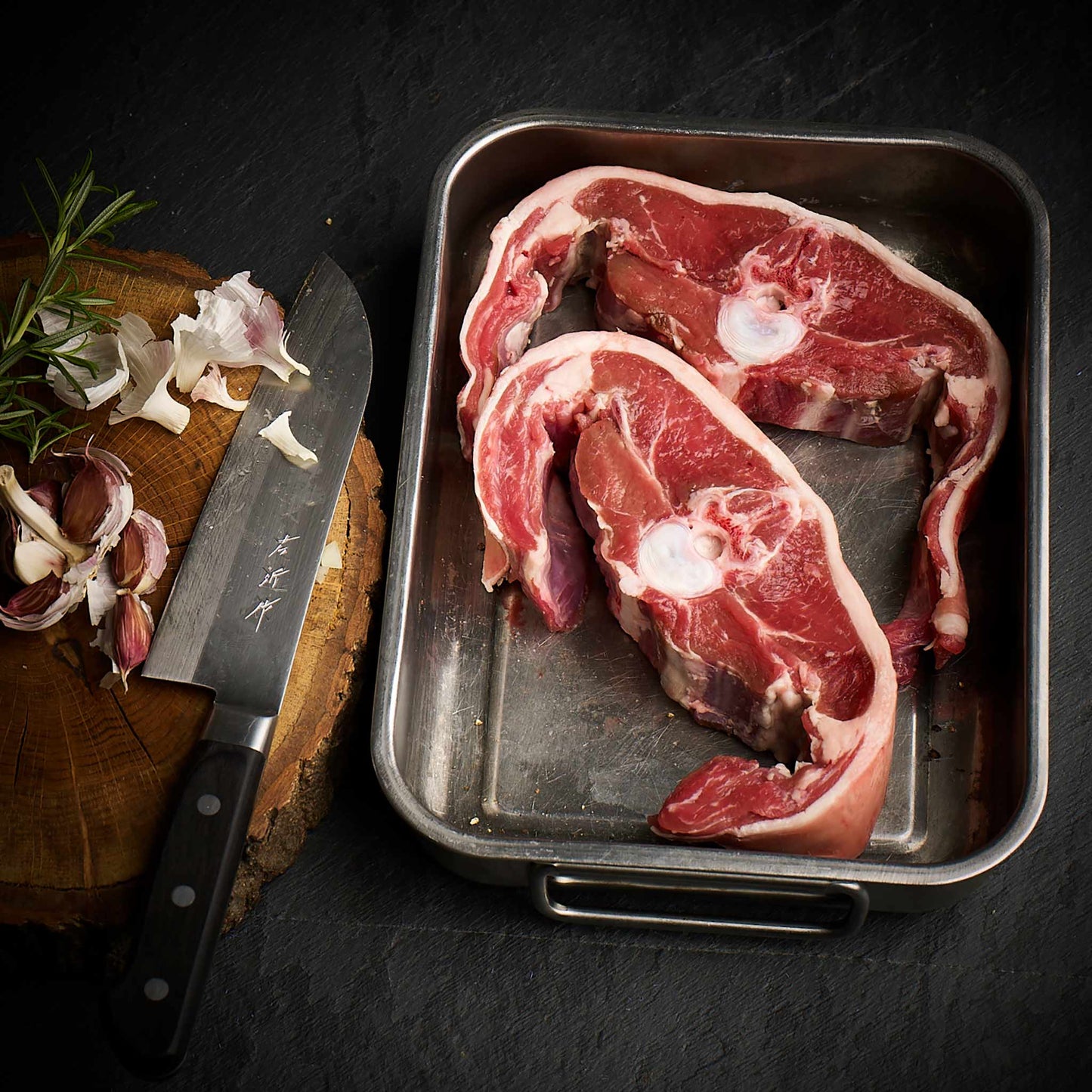We source our chicken from one farm in Leicestershire. The farm is Pasture for Life certified and rears truly free range, outdoor birds.

How can cattle repair the land?
Grasses evolved to be grazed and grazers evolved to eat grasses, that's a mouthful but it helps us to understand the fundamental of the interconnectedness of systems in nature.
Grassland ecology is quite simple.
Grass puts green leaves upward and roots downward during the growing season. The leaves use air, water and sunlight to make sugars. The carbon and water are stored in the roots as carbohydrates: carbon + water. If the plant is a food crop, we can often eat the leaves, stem and roots and derive lots of nourishment from them. If the plants are mainly cellulose, our stomachs have no way to digest them.
Grasses (and other plants) evolved with ruminant animals. Ruminants have extra stomachs and sturdy mouths to break down, ferment and digest the cellulose in grasses so the nutrients in them can be absorbed and converted to meat, fat and energy for the animal. What's left is pee and poop, burps and farts.
Grass must be eaten down by ruminants to survive. Without grazing, grasses grow high, desiccate and oxidize. They slough off their roots and after a few years stop growing altogether. By grazing most of the plant leaves and moving on to new pastures, ruminants revitalize grasslands. Without grazing, the land dies.
Grass is not just what you see above ground. Perennial grasses put down deep roots during the growing season; around the roots a universe of biological activity occurs. The roots exude sugars to attract the previously unconnected microbes and fungi underground. These organisms network themselves and begin to breakdown bedrock into minerals the plant's roots can absorb. The plant can signal for nutrients and water, or tell the underground miners it is under attack and to create substances to help the plant fight insects and diseases
After a grazing animal eats its leaves, the plant lets most of its root system go dormant. Later it begins growing new roots to reestablish its nutrient and immune support system underground. Here is the magic: the old roots, made of carbon and water, serve as the foundation of new topsoil.
Carbon rich soil continues to generate biological activity underground. It forms a sponge that can absorb huge amounts of water from rainfall or flooding, which it slowly releases over time: drought tolerance and flood resilience.
This process is critical to carbon sequestration. Health grasslands take carbon from the atmosphere and place it safely underground.
Grasslands without ruminant herds moving from place to place are called deserts. The grass cannot survive. Herds that are left to roam and graze at will don't hack it.
Grasslands need animals to trample the soil crust, digest the leafy matter, deposit poop and pee, and then move on so it can resurrect itself and the soil below: managed grazing.
Grass-dominated biomes are called grasslands. If only large, contiguous areas of grasslands are counted, these biomes cover 31% of the planet's land area.
These areas and systems need preserving and repairing.
Grassland ecology is quite simple.
Grass puts green leaves upward and roots downward during the growing season. The leaves use air, water and sunlight to make sugars. The carbon and water are stored in the roots as carbohydrates: carbon + water. If the plant is a food crop, we can often eat the leaves, stem and roots and derive lots of nourishment from them. If the plants are mainly cellulose, our stomachs have no way to digest them.
Grasses (and other plants) evolved with ruminant animals. Ruminants have extra stomachs and sturdy mouths to break down, ferment and digest the cellulose in grasses so the nutrients in them can be absorbed and converted to meat, fat and energy for the animal. What's left is pee and poop, burps and farts.
Grass must be eaten down by ruminants to survive. Without grazing, grasses grow high, desiccate and oxidize. They slough off their roots and after a few years stop growing altogether. By grazing most of the plant leaves and moving on to new pastures, ruminants revitalize grasslands. Without grazing, the land dies.
Grass is not just what you see above ground. Perennial grasses put down deep roots during the growing season; around the roots a universe of biological activity occurs. The roots exude sugars to attract the previously unconnected microbes and fungi underground. These organisms network themselves and begin to breakdown bedrock into minerals the plant's roots can absorb. The plant can signal for nutrients and water, or tell the underground miners it is under attack and to create substances to help the plant fight insects and diseases
After a grazing animal eats its leaves, the plant lets most of its root system go dormant. Later it begins growing new roots to reestablish its nutrient and immune support system underground. Here is the magic: the old roots, made of carbon and water, serve as the foundation of new topsoil.
Carbon rich soil continues to generate biological activity underground. It forms a sponge that can absorb huge amounts of water from rainfall or flooding, which it slowly releases over time: drought tolerance and flood resilience.
This process is critical to carbon sequestration. Health grasslands take carbon from the atmosphere and place it safely underground.
Grasslands without ruminant herds moving from place to place are called deserts. The grass cannot survive. Herds that are left to roam and graze at will don't hack it.
Grasslands need animals to trample the soil crust, digest the leafy matter, deposit poop and pee, and then move on so it can resurrect itself and the soil below: managed grazing.
Grass-dominated biomes are called grasslands. If only large, contiguous areas of grasslands are counted, these biomes cover 31% of the planet's land area.
These areas and systems need preserving and repairing.
A plant-based diet, and anti-livestock advocacy, fails to take ecological science into account. By all means, eat what makes sense to you. But don't ignore the health of the planet. Protect grasslands. Fight concentrated feeding. Don't denigrate all livestock.
So what are the possible options available to us?
https://www.linkedin.com/



